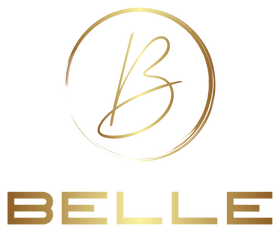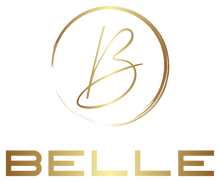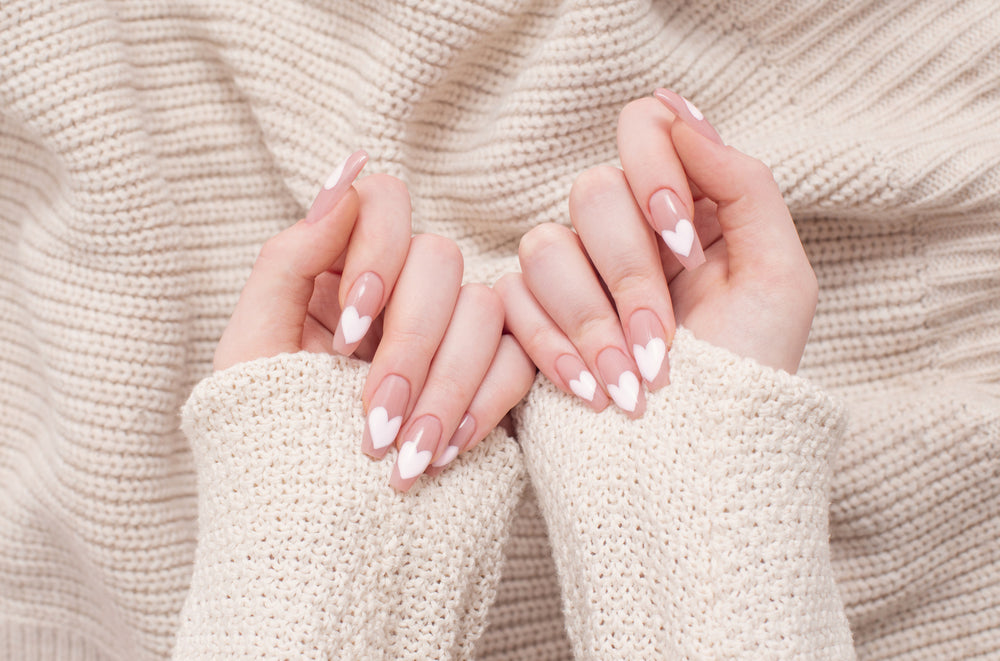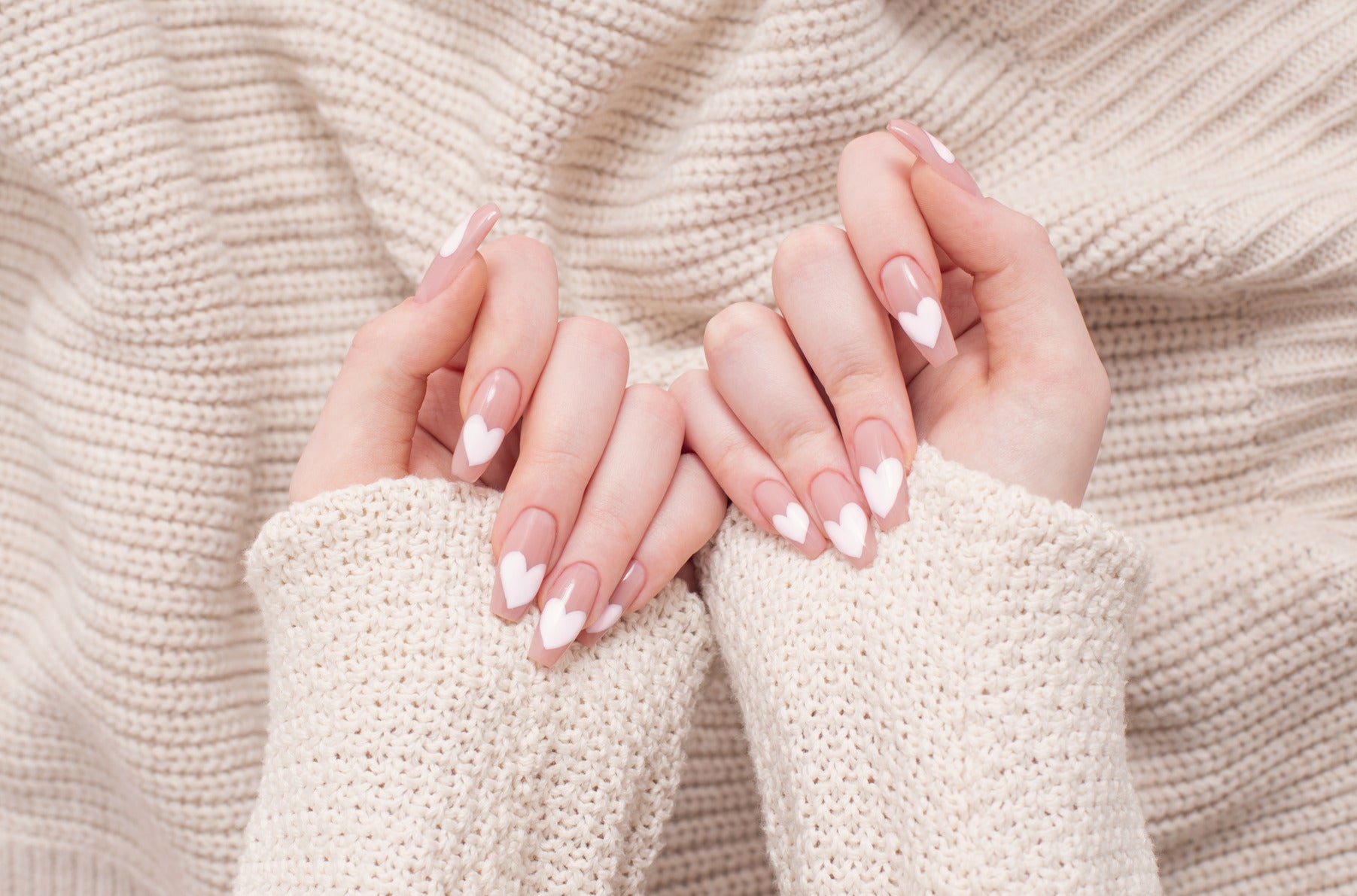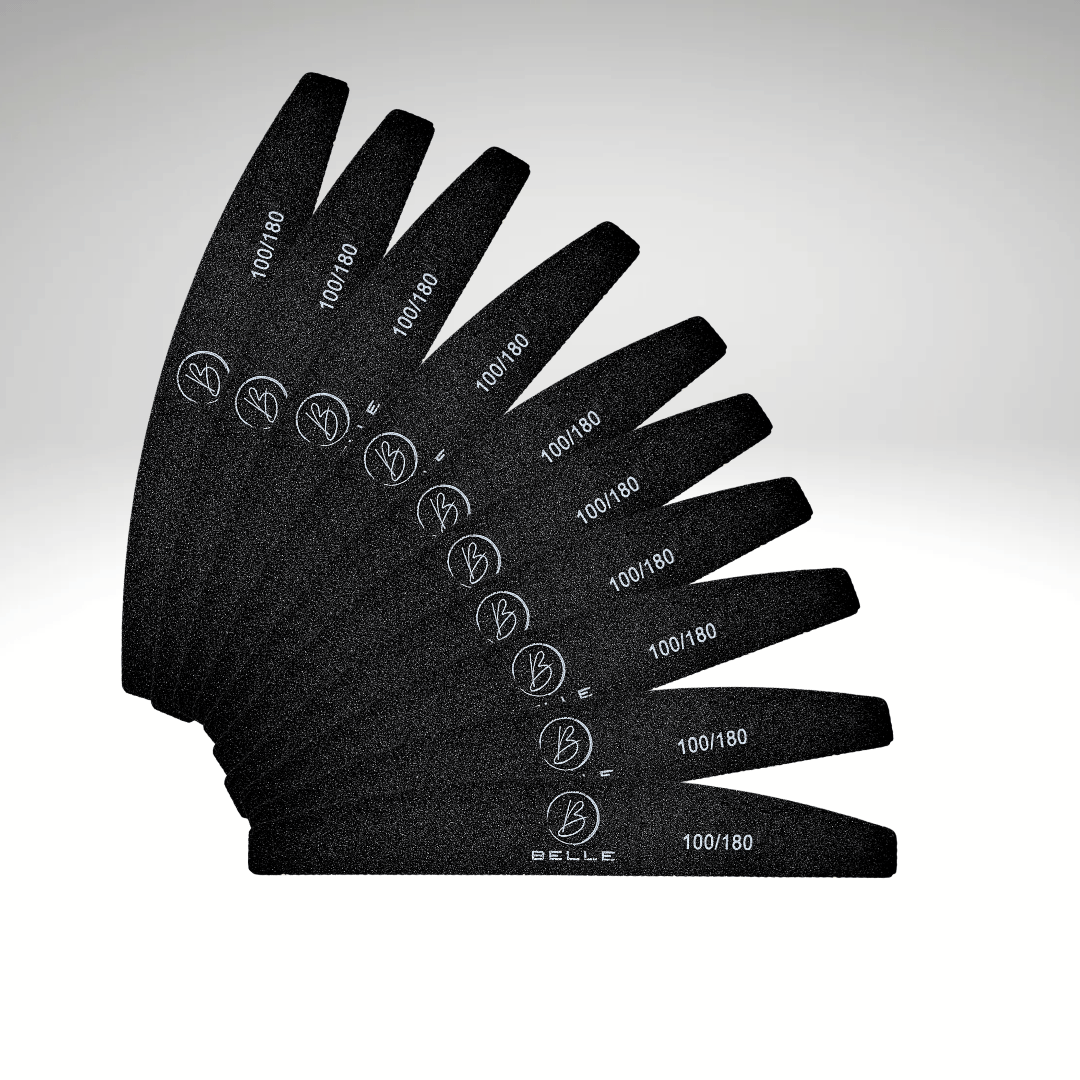What equipment do you need to become a Nail Technician?
Becoming a nail technician is an exciting journey. It's a path that combines creativity, precision, and a passion for beauty.
But what does it take to get started? What tools and equipment are essential for this profession?
In this guide, we'll explore the world of nail technician equipment. From basic tools like nail files and cuticle pushers to advanced equipment like UV lamps and electric nail files, we'll cover it all.
We'll also delve into the importance of each item. You'll learn how they contribute to the quality of your work and the satisfaction of your clients.
Whether you're an aspiring nail technician or a seasoned pro looking to upgrade your kit, this guide is for you.
Understanding the Nail Technician's Toolkit
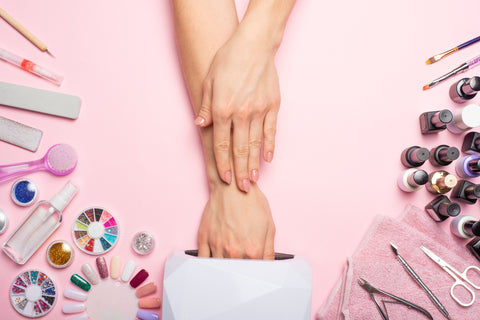
A nail technician's toolkit is a collection of tools and products that are essential for providing professional nail services. It's not just about having the right items, but also understanding their uses and importance.
Each tool in your kit has a specific purpose. Some are used for shaping and smoothing the nails, while others are for cuticle care or nail polish application. There are also tools for sanitation and safety, which are crucial for maintaining a clean and safe work environment.
Here are some key points to remember about nail technician equipment:
- Quality matters: Investing in high-quality tools can improve the efficiency and outcome of your services.
- Sanitation is key: Tools must be cleaned and sanitised properly to prevent the spread of infections.
- Ergonomics count: Consider the comfort and ease of use of your tools to prevent strain and injury.
- Stay updated: Keep up with the latest trends and technologies in nail care to offer the best services to your clients.
Understanding your toolkit is the first step towards becoming a successful Nail Technician. It's about knowing what you need, why you need it, and how to use it effectively.
Basic Nail Technician Tools
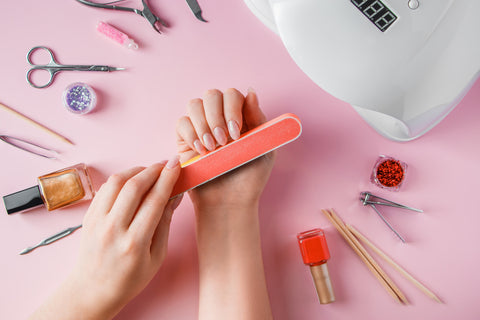
The basic tools of a nail technician are the foundation of any nail service. These are the items you'll use most often, and they're essential for performing a variety of tasks. From shaping the nails to caring for the cuticles, these tools are indispensable.
Here's a list of the basic tools you'll need:
- Nail files and buffers- Cuticle pushers and nippers
- Nail scissors and clippers
Nail Files and Buffers
Nail files are crucial for shaping the nails. They allow you to create the desired nail shape, whether it's square, round, or oval. Buffers, on the other hand, are used to smooth the surface of the nails. They help to remove ridges and create a smooth base for nail polish application.
Both files and buffers come in different grits. The lower the grit number, the coarser the file. For natural nails, it's best to use a file with a higher grit number to prevent damage.
Cuticle Care: Pushers and Nippers
Cuticle care is an important part of nail services. Cuticle pushers are used to gently push back the cuticles, creating a clean and neat nail bed.
Cuticle nippers, on the other hand, are used to trim away excess cuticles and hangnails. They should be used with care to avoid cutting too deep and causing injury. Remember, the goal is to create a clean and neat appearance, not to remove the entire cuticle.
Nail Scissors and Clippers
Nail scissors and clippers are used for trimming the nails. Scissors offer more control and precision, making them ideal for shaping the nails. Clippers, on the other hand, are great for quickly reducing length.
Both tools should be sharp and well-maintained to ensure clean cuts. Dull tools can cause splitting or tearing, which can lead to nail damage. Remember, the health and appearance of the nails are your top priorities as a nail technician.
Essential Liquids for Nail Technicians
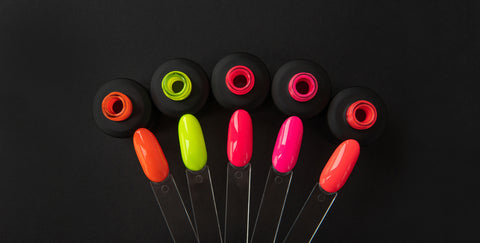
In addition to tools and equipment, nail technicians also need a variety of liquids for their work. These include everything from nail polish removers to base and top coats. Each of these liquids plays a crucial role in the nail care process.
Here are some essential liquids you'll need as a nail technician:
- Acetone and nail polish removers- Base coats, top coats, and nail strengtheners
- Cuticle Oil
Acetone and Nail Polish Removers
Acetone is a powerful solvent that's commonly used to remove nail polish. It's particularly effective at removing gel polish and acrylic nails. However, it can be drying to the skin and nails, so it's important to use it sparingly and follow up with a moisturising product.
Non-acetone nail polish removers are a gentler alternative. They may take a bit longer to remove polish, but they're less drying. It's a good idea to have both types on hand to cater to different clients' needs and preferences.
Base Coats, Top Coats, and Nail Strengtheners
Base coats are applied before the nail polish. They protect the natural nail from staining and help the polish adhere better. Some base coats also have strengthening or ridge-filling properties.
Top coats are applied after the nail polish. They seal in the colour, add shine, and protect the polish from chipping. Some top coats also speed up drying time.
Nail strengtheners are treatments that can help improve the condition of weak or brittle nails. They can be used as a base coat or applied on their own. Offering these treatments can add value to your services and help your clients achieve healthier nails.
Cuticle Oils
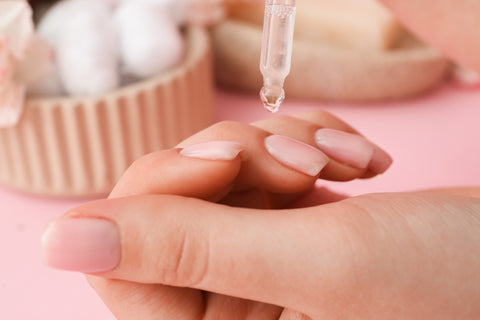
Cuticle oil is essential for maintaining nail health, by hydrating the nail and cuticle. Regular application ensures that nails remain strong and flexible, reducing the likelihood of brittleness and breakage.
Gel Nail Polish and Nail Art Supplies
To make your creations stand out, gel nail polish and/or nail art supplies are essential. Gel polish requires specific techniques and equipment, while nail art involves a range of tools and accessories.
Gel Polish
Gel nail polish is known for its durability and high-gloss finish. To apply it, you'll need gel polishes, a base and top coat designed for gel polish, and a UV or LED lamp to cure the polish.
It's also important to have a good quality gel polish remover. This is usually a type of acetone that's formulated to break down the tough gel polish, allowing it to be removed without damaging the natural nail.
Nail Art Tools and Accessories

Nail art allows for creativity and customisation. The tools you'll need will depend on the types of designs you want to create. Some basics include nail art brushes, dotting tools, and nail art stickers.
You might also want to invest in rhinestones, decals, and glitter for embellishments. A nail art palette can be useful for mixing custom colours. Remember, the more options you can offer, the more appealing your services will be to potential clients.
Advanced Nail Technician Equipment

As you progress in your career as a nail technician, you'll likely start to offer more advanced services. These services often require specialised equipment. This equipment can help you work more efficiently and offer a wider range of services to your clients.
Here's a list of some advanced equipment you might need:
- Electric nail files and drills- UV and LED lamps
Electric Nail Files and Drills
Electric nail files, also known as nail drills, are a game-changer for many nail technicians. They can save you a lot of time and effort, especially when working with artificial nails. Nail drills can be used for a variety of tasks, such as removing gel polish, shaping and filing artificial nails, and cleaning under the nails.
However, they require careful handling. Improper use can lead to nail damage or even injury. Therefore, it's crucial to receive proper training before using a nail drill. Always remember to prioritise the safety and comfort of your clients.
UV and LED Lamps
UV and LED lamps are essential for curing gel polish. Without them, the gel polish won't harden and dry properly. UV lamps have been around for a while, but LED lamps are becoming increasingly popular.
Investing in a high-quality, powerful lamp will ensure a faster, more even drying, which is likely to last longer than a cheaper one.
Sanitation and Safety Equipment
Sanitation and safety are paramount in the nail care industry. Proper cleaning and sterilisation of tools can prevent the spread of infections. Personal protective equipment (PPE) is also important for protecting both the technician and the client.
Here are some key sanitation and safety equipment:
- Disinfectants and sterilisation tools- Personal protective equipment (PPE)
Disinfectants and Sterilisation Tools
Disinfectants are used to clean non-disposable tools after each use. They kill bacteria, viruses, and fungi that can cause infections. Some salons use ultrasonic cleaners or autoclaves for deep cleaning.
Sterilisation pouches can be used to store tools after they've been cleaned. This keeps them free from contaminants until they're used again. Remember, a clean salon is a safe salon.
Personal Protective Equipment (PPE)
Almost all Nail Technicians use gloves during their course of work, which helps to protect your skin from harsh chemicals and prevent the spread of germs.
It's also a good idea to have a first aid kit on hand. Accidental cuts or injuries can happen, and it's important to be prepared. Safety should always be a top priority in your salon.
Additional Considerations for Nail Technicians
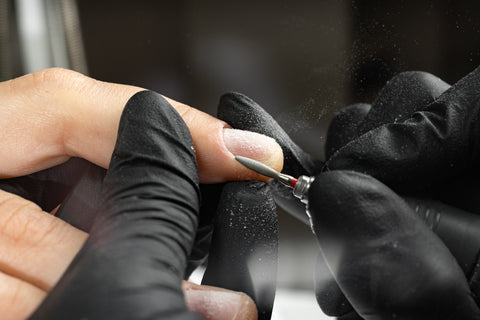
Beyond the essential tools and products, there are other factors to consider. Ergonomics and comfort can impact your work quality and health. Staying updated with trends and continuing education is also crucial.
Here are some additional considerations:
- Ergonomics and comfort- Keeping up with trends and education
Ergonomics and Comfort
Ergonomics is about designing your workspace to fit you, not the other way around. This can prevent strain and injury. For example, an adjustable chair can help maintain good posture during long hours of work.
Comfort isn't just about physical well-being. A well-organised and comfortable workstation contributes to a professional and relaxing environment. This can enhance your clients' experience and your productivity.
Keeping Up with Trends and Education
The nail industry is always evolving. New trends, techniques, and products emerge regularly. Staying updated can help you offer the latest services and attract a wider clientele.
For instance, many nail technicians have started adding software solutions like a nail salon booking app into their daily workflow to streamline appointment management and improve customer experience. These tools not only reduce no-shows and double bookings but also allow clients to book services online, choose their preferred technician, and receive automated reminders.
Continuing education is also important. Online tutorials, workshops, and courses can help you master new techniques and equipment. Remember, a commitment to learning is key to growth in this industry.
Conclusion: Building Your Nail Technician Equipment List
Building your nail technician equipment list is a crucial step in starting your career. It's not just about having the right tools, but also understanding their uses and maintaining them properly. Remember, quality equipment can improve your services and client satisfaction.
Starting with the basics and gradually adding advanced tools as you grow is a practical approach. Always consider the cost-quality trade-off and invest wisely. And don't forget, staying updated with trends and continuing education can help you make the most of your equipment. Happy nail tech journey!
